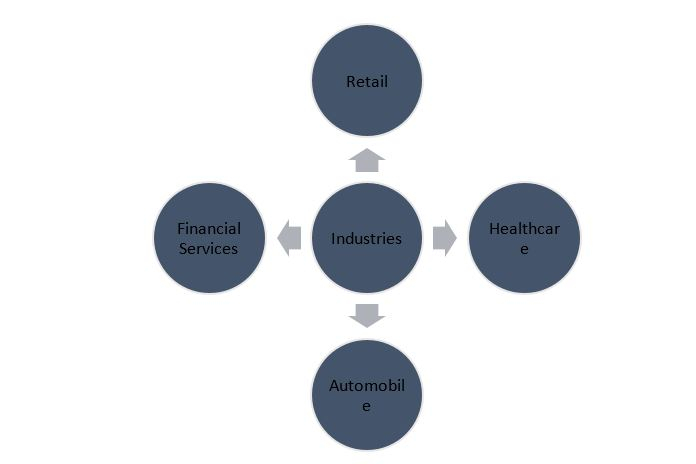
 Data Structure
Data Structure Networking
Networking RDBMS
RDBMS Operating System
Operating System Java
Java MS Excel
MS Excel iOS
iOS HTML
HTML CSS
CSS Android
Android Python
Python C Programming
C Programming C++
C++ C#
C# MongoDB
MongoDB MySQL
MySQL Javascript
Javascript PHP
PHP
- Selected Reading
- UPSC IAS Exams Notes
- Developer's Best Practices
- Questions and Answers
- Effective Resume Writing
- HR Interview Questions
- Computer Glossary
- Who is Who
What is Omnichannel Marketing?
In order to provide a seamless brand experience, omnichannel marketing entails synchronizing and aligning the various channels that your company utilizes to interact and communicate with its clients. The above applies to both the offline distribution channels such as the corner stores and online distribution channels like websites and mobile applications. An omnichannel business model aims to offer their customers a straightforward, hindrance-free user experience with a great variety of fulfillment options. The omnichannel marketing strategy allows the customers to browse, select and make final purchases of the products online, physically, or through a blend of both, such as "purchase online and pick up in store." Omnichannel techniques are being widely used by businesses today, in a number of industries, including medicine, commerce, banking and finance, software, and various others.
For the purpose of guiding customers along the sales funnel and providing a more concrete customer experience, omnichannel marketing seamlessly combines marketing, information, and online and offline interactions. Consumer-focused tactics are used in omnichannel marketing. Customers can now connect with brands through many channels, such as social media and toll-free phones. To guarantee that your customers have a positive and consistent experience through all channels, implement an omnichannel strategy as below ?
A distinct, dependable brand language and purpose
Individualized communication depending on the preferences of the individual
On the basis of data from past interactions and the current phase of the customer lifecycle

Customers find it simpler to remember and recall well-known brands, and personalization based on customer preferences and purchasing history increases the likelihood that customers will interact with brand messages across all platforms.
Advantages of Using Omnichannel Marketing
Most brands nowadays do not deny the fact that an omnichannel approach might result in the best possible outcomes. Even though planning and executing an omnichannel strategy effectively is challenging, there are numerous benefits. Customers are growing extremely picky about the brands they wish to engage with as a result of their being overwhelmed by receiving a continual onslaught of communications from a variety of brands. Creating omnichannel consumer experiences can lead to the following benefits ?
It gives a Better User Experience to the Customers ? Omnichannel enhances the user experience by focusing on the distinct user experience throughout all platforms instead of the medium. By keeping the client on priority over the platform, the companies and businesses may increase revenues and boost their retention rates.
It helps to Create a Smooth Brand Strategy & Identity ? Building a brand reputation and style which is can be easily recognized, is essential for having a cohesive approach throughout the various platforms. Organizations must build such identity and reputation on the needs, desires, and values of their essential audiences. A company's brand plans or strategy will be more suitable if they concentrate on the complete experience and if they use standard branding ways to target each channel. This will result in increased customer loyalty towards the brand.
It leads to Increased Revenue Generation ? When utilizing an omnichannel strategy, shoppers are urged to interact with brands through a variety of interactions and channels. These improved, diverse contacts at each stage of the customer lifecycle might help increase sales because research shows that customers who interact with several connections tend to be 30% more valued. Additionally, encouraging loyalty, this targeted messaging raises the possibility that a customer will use the brand repeatedly. Returning clients often represent 40% of your sales even if they represent a smaller portion of your clientele.
It helps to get a more Reliable Attribution Data ? Going fully omnichannel should take into account both data analytics and customer interactions. By tracking engagements across channels, brands gain a greater understanding of the customer journey, the best times and places for interaction, and the strategies that have produced the most value. You may utilize all of this data to more effectively target your advertisements and use your media budget.
Industries Implementing Omnichannel Marketing in Their Businesses
As consumers gain more power, omnichannel strategies have gained popularity throughout businesses ? nevertheless, they are especially common in the following areas ?

Retail ? In the current multichannel world, especially retail has seen significant changes. Retail marketers must examine how customers interact with their brands across a range of platforms given the option to buy inside the store or online as well as the advent of social media and testimonial sites to ensure a successful conclusion.
Healthcare ? Customers who use healthcare typically engage with a variety of endpoints from hospitals to general practitioners to medications. Healthcare professionals may better serve consumers and give them the information that is important to them by evaluating data about customer journeys and interactions, while also reducing possible health risks.
Automotive ? Automobile dealers and producers place a high emphasis on building client loyalty and brand awareness because purchasing a car is an investment that must be made over the long term. The advertisements of today might not immediately provide the desired effects, but if they attract new customers and retain existing ones, they will gradually impact sales. However, even in the automobile sector, the buying process has changed, with 80% of customers starting their car research online. In addition, it's anticipated that 4.5 million cars might be sold exclusively online in 2020. Having a thorough advertising strategy that connects customers across all dimensions is more crucial than ever.
Financial Services ? The focus of the financial services and banking industries is changing from one that is heavily focused on products to one that is more customer-centric. Companies must think about how to provide personalized experiences so that they may learn which of the numerous products and services offered would be the greatest choice for every customer based on their individual tastes, desires, and requirements.
Great Example of Omnichannel Marketing
While thinking of building an omnichannel strategy, keep in mind that brand such as Starbucks have planned and executed the same successfully. The elaborate explanation is as below ?

Starbucks
Starbucks' mobile rewards program, which prioritizes customer convenience, allows for even more seamless integration of the smartphone into experiences. Customers can top off their cards using a desktop or a mobile device. Customers who pay with the app are given points they can use to later get a free coffee. To prevent a long line, they can also place their order beforehand.
Modern customers expect information to be available immediately and have greater access to selections than ever before because of online media. Through omnichannel marketing, which enhances the total customer experience, consumers are able to communicate with brands on their terms. Businesses may more easily give customers with an omnichannel experience by choosing the right media mix, targeting, and other criteria with the help of contemporary marketing performance assessment technology. By examining the client journey at each point, businesses may enhance campaign optimization and reduce unnecessary ad spending.

